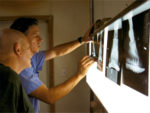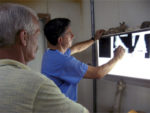Advertise Follow Us
Articles Tagged with ''MRI''
Adding A Farrier Day To An Equine Veterinary Practice
A well-planned program promotes hoof-care knowledge, improves farrier-veterinarian communication and pays off for everyone
Read More
Using MRI to Help Diagnose Foot Problems
Researchers and practitioners continue to expand their use of new imaging technology
Read More
The Murky Waters of Navicular Disease
What we used to understand about navicular disease has changed a great deal. Still, veterinarian David Ramey is optimistic about how we treat what we thought we knew
Read More
Technology Focus
Diagnostic Imaging For Lameness
Clinicians describe the use of X-rays, venograms, ultrasound, and MRIs for tough foot-pain cases
Read More
Step On It!
High-tech pressure mat system gives this Texas veterinarian new information for evaluating and tailoring shoeing
Read More










